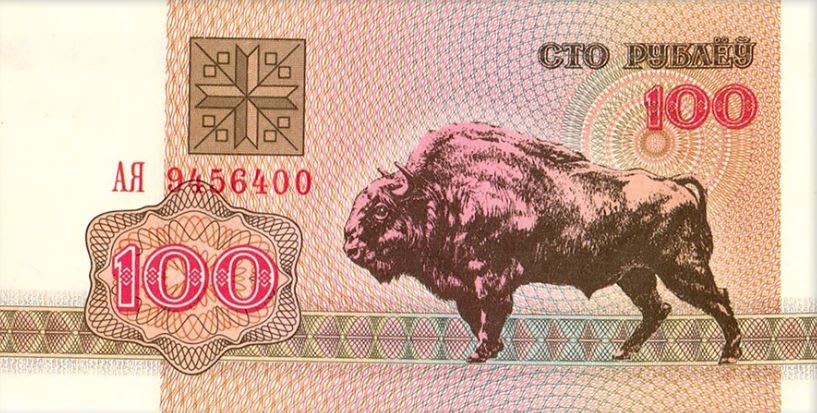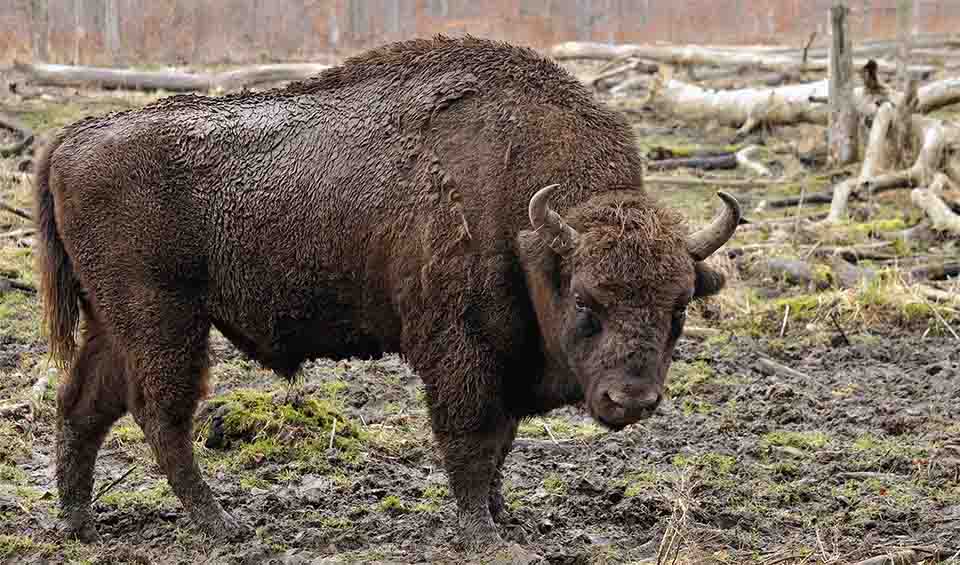Dwelling in the temperate deciduous forests of Europe, these majestic animals are a sight to behold, with their formidable size and regal demeanor. They rank among the largest land mammals in Europe, reaching heights of up to 2 meters (6.5 feet) and weights surpassing 900 kilograms (approximately 2,000 pounds). The European bison’s distinctive appearance is further accentuated by its dense, shaggy mane that drapes elegantly down its neck and shoulders, complemented by a rich brown coat that provides insulation against the chill of the forest.
As herbivores, European bison play a crucial role in their ecosystems. Their diet consists mainly of grasses, leaves, and other vegetation, which they forage within the undergrowth of their forested habitats. This feeding behavior not only sustains the bison but also contributes to the maintenance of habitat diversity by controlling the growth of certain plant species.
The history of the European bison is a tale of triumph over adversity. Once roaming freely across Europe and parts of Asia, these animals were hunted to the brink of extinction, with their numbers dwindling drastically due to overhunting and habitat loss. By the early 20th century, the grim reality had set in: the European bison had been exterminated in the wild, surviving only in captivity. This dire situation sparked an international response, leading to one of the first major wildlife conservation efforts of its kind.
Through the concerted efforts of conservationists, scientists, and governments, a breeding and reintroduction program was established, drawing on the small captive population that remained. These efforts have borne fruit, with the European bison’s numbers gradually increasing over the decades. Today, thanks to these dedicated conservation initiatives, the population has rebounded to over 6,000 individuals, with several free-ranging herds successfully reestablished in their natural habitats across Europe.
Distribution
 Austria
Austria Official estimate
Official estimate
 Azerbaijan
Azerbaijan Official estimate
Official estimate
 Belarus
Belarus Official estimate
Official estimate
 Belgium
Belgium Official estimate
Official estimate
 Bulgaria
Bulgaria Official estimate
Official estimate
 Croatia
Croatia Official estimate
Official estimate
 Czechia
Czechia Official estimate
Official estimate
 Denmark
Denmark Official estimate
Official estimate
 Estonia
Estonia Official estimate
Official estimate
 Finland
Finland Official estimate
Official estimate
 France
France Official estimate
Official estimate
 Germany
Germany Official estimate
Official estimate
 Hungary
Hungary Official estimate
Official estimate
 Ireland
Ireland Official estimate
Official estimate
 Italy
Italy Official estimate
Official estimate
 Latvia
Latvia Liechtenstein
Liechtenstein Official estimate
Official estimate
 Lithuania
Lithuania Official estimate
Official estimate
 Moldova
Moldova Netherlands
Netherlands Official estimate
Official estimate
 Poland
Poland Official estimate
Official estimate
 Portugal
Portugal Romania
Romania Official estimate
Official estimate
 Russia
Russia Official estimate
Official estimate
 Serbia
Serbia Official estimate
Official estimate
 Slovakia
Slovakia Official estimate
Official estimate
 Spain
Spain Official estimate
Official estimate
 Sweden
Sweden Official estimate
Official estimate
 Switzerland
Switzerland Official estimate
Official estimate
 Ukraine
Ukraine Official estimate
Official estimate
 United Kingdom
United Kingdom Official estimate
Official estimate
Recent updates
- 2023: According to All About Bison, in certain regions, the European bison population has made remarkable progress, with a recent report indicating the establishment of a new herd consisting of approximately 150 individuals.
Did you know?
- Both males and females have horns.
- European bison have less sharp eyesight compared to their other senses. Their large forward-facing eyes offer a broad field of view rather than precise visual details, making it challenging for them to discern distant objects or fine details.
- The footprints of European bison resemble those of cattle and moose. Their front hooves create larger imprints compared to their hind legs.
Anything we've missed?
Help us improve this page by suggesting edits. Glory never dies!
Suggest an editGet to know me
Terrestrial / Aquatic
Altricial / Precocial
Polygamous / Monogamous
Dimorphic (size) / Monomorphic
Active: Diurnal / Nocturnal
Social behavior: Solitary / Pack / Herd
Diet: Carnivore / Herbivore / Omnivore / Piscivorous / Insectivore
Migratory: Yes / No
Domesticated: Yes / No
Dangerous: Yes / No
European Bison





